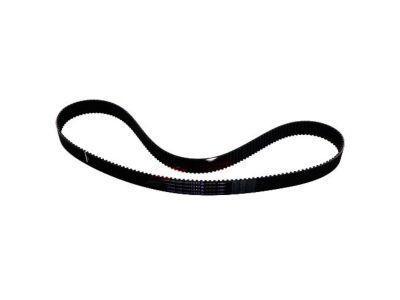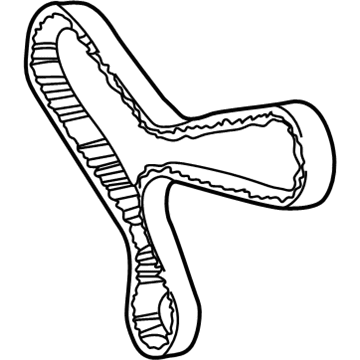×
ToyotaParts- Hello
- Login or Register
- Quick Links
- Live Chat
- Track Order
- Parts Availability
- RMA
- Help Center
- Contact Us
- Shop for
- Toyota Parts
- Scion Parts
My Garage
My Account
Cart
OEM 2004 Toyota Tacoma Timing Belt
Engine Timing Belt- Select Vehicle by Model
- Select Vehicle by VIN
Select Vehicle by Model
orMake
Model
Year
Select Vehicle by VIN
For the most accurate results, select vehicle by your VIN (Vehicle Identification Number).
1 Timing Belt found

2004 Toyota Tacoma Timing Belt
Part Number: 13568-YZZ03$58.42 MSRP: $81.32You Save: $22.90 (29%)Ships in 1-3 Business DaysProduct Specifications- Other Name: Belt Set, Timing; Engine Timing Belt; Timing Belt Kit
- Replaces: 13568-69095
- Item Weight: 1.00 Pounds
- Condition: New
- SKU: 13568-YZZ03
- Warranty: This genuine part is guaranteed by Toyota's factory warranty.
2004 Toyota Tacoma Timing Belt
Looking for affordable OEM 2004 Toyota Tacoma Timing Belt? Explore our comprehensive catalogue of genuine 2004 Toyota Tacoma Timing Belt. All our parts are covered by the manufacturer's warranty. Plus, our straightforward return policy and speedy delivery service ensure an unparalleled shopping experience. We look forward to your visit!
2004 Toyota Tacoma Timing Belt Parts Q&A
- Q: How to remove and install the timing belt on 2004 Toyota Tacoma?A: The first step to remove the timing belt requires removal of the engine under cover followed by draining engine coolant before disconnecting the upper radiator hose. Professionals should disconnect the PS pump by taking off two PS air hoses from both the air intake chamber and resonator while also unfastening the PS pressure tube frame clamp bolt and drive belt together with the PS pump bolt and nut. You must first disconnect the A/C compressor from the engine through removing its connector and drive belt and four bolts. The servicing engineer starts by opening the fan with fluid coupling and fan pulleys while removing the generator drive belt followed by the No.2 fan shroud and fan with fluid coupling and fan pulleys and finally the A/C compressor bracket using five bolts. Start by removing the oil dipstick guide then detach the No.2 timing belt cover through disconnecting four high-tension cord clamps and six bolts and disconnecting the camshaft position sensor connector. The PS pump adjusting strut needs removal while unscrewing its associated nut to access the fan bracket with its bolt and nut. The crankshaft pulley removal sequence starts with bolt loosening using Special Service Tool: 09213-54015 (90119-08216) 09330-00021 followed by removal of Special Service Tool: 09950-50011 (09951-05010, 09952-05010, 09953-05020, 09954-05031). Additional steps include using the tool to remove pulley bolt along with pulley. Two bolts must be removed from the starter wire bracket while four bolts need removal from the No.1 timing belt cover to proceed. Place the crankshaft pulley bolt temporarily to set the first cylinder at maximum compression point while checking for correct timing mark alignment between camshaft pulleys and the third timing belt cover. A careful examination should be done for the three installation marks and front mark on the timing belt. The addition of new marks will be necessary if any of those marks are missing during removal. Begin removing the timing belt tensioner by alternating the bolt looseness on two points before removing the timing belt. Use Special Service Tool: 09960-10010 (09962-01000, 09963-01000) to loosen the camshaft timing pulley bolt before you take off the bolt and knock pin along with the timing pulley for the RH side. Follow the same procedure for the LH camshaft timing pulley. Numerous steps follow for pulley removal where you need to first remove bolt from the No.2 idler pulley and secondly use 10 mm hexagon wrench to detach the pivot bolt and plate washer from the No.1 idler pulley. Start by removing the crankshaft timing pulley through the use of Special Service Tool: 09950-50011 (09951-05010, 09953-05020, 09954-05031) that includes a service bolt when needed. Check the timing belt for damages and bend and twist while verifying it does not touch oil, water or steam. Confirm it is installed correctly and look for signs of normal wear. The inspection of idler pulleys must include an evaluation for oil leakage and smooth operation while the timing belt tensioner needs evaluation for oil leakage along with proper push rod functionality. The crankshaft timing pulley should be installed with the set key in the groove followed by installation of the No.1 idler pulley at 35 Nm (350 kgf-cm, 26 ft. lbs.) and No.2 idler pulley at 40 Nm (400 kgf-cm, 30 ft. lbs.). The LH and RH camshaft timing pulleys need installation with the flange outside and Special Service Tool: 09960-10010 (09962-01000, 09963-01000) to tighten the pulley bolts to 110 Nm (1,100 kgf-cm, 81 ft. lbs.). Align the timing belt between its marks after cleaning before placing the belt at No.1 cylinder TDC. Press the push rod to adjust the timing belt tensioner and fasten it with a 1.27 mm hexagon wrench. Secure the tensioner using two bolts which should be tightened to 27 Nm (280 kgf-cm; 20 ft. lbs.). Adjust the valve timing by matching timing marks before installing the timing belt guide and No.1 timing belt cover and starter wire bracket while checking gasket conditions. Use Special Service Tool 09213-54015 (90119-08216), 09330-00021 to install the crankshaft pulley with a newly installed bolt that requires a torque of 295 Nm (3,000 kgf-cm, 217 ft. lbs.). The technician installs the fan bracket along with the A/C compressor bracket before fixing the fan with fluid coupling and fan pulleys as a temporary operation. Install the Number 2 fan shroud before adjusting generator drive belt tension while tightening the fan with coupling and pulleys to 5.4 Nm (54 kgf-cm, 48 inch lbs.). Then secure the A/C compressor to the engine using four bolts tightened to 25 Nm (250 kgf-cm, 18 ft. lbs.) and connect the PS pump to the engine with 43 Nm (440 kgf-cm, 31 ft. lbs. torque). After connecting the upper radiator hose you should add coolant to the engine then start it to search for leaks during the procedure followed by engine under cover installation and a road test to check abnormal noise or operation before rechecking the engine coolant level.
















